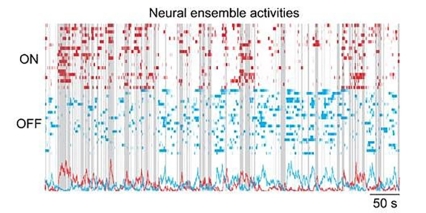Difficulties with social behavior can reflect a variety of psychiatric conditions, including schizophrenia and autism spectrum disorders. Some chronic substance use behaviors could be attempts to minimize these social deficits.
Knowing more about how the brain functions in social situations is critical to finding solutions to a broad range of psychiatric disorders, including addiction. The brain’s medial prefrontal cortex (mPFC) is important for social behavior, but the mechanisms by which mPFC neurons code real-time social exploration remain largely unknown.
An international team of scientists led by NIDA utilized miniature fluorescence microscopes to record calcium activities from hundreds of excitatory neurons in the mPFC in the brains of mice, while they freely explored social interactions with other mice. The mice were given a series of social behavior tests in the absence or presence of the psychedelic drug phencyclidine (PCP), which alters social behaviors. Findings revealed that ensembles, which are distinct and dynamic neural groups, are tuned on or off to social exploration, and dysfunctions in these ensembles are associated with abnormal social exploration elicited by PCP.
These findings underscore the importance of mPFC ON and OFF neural ensembles for proper social exploratory behavior, and pave the way for future studies related to neural circuit dysfunctions in psychiatric disorders.
This study was conducted by scientists from NIDA’s Intramural Research Program, along with researchers from the Johns Hopkins School of Medicine, University of Wyoming, University of Maryland School of Medicine, and Fujian Medical University in China.

